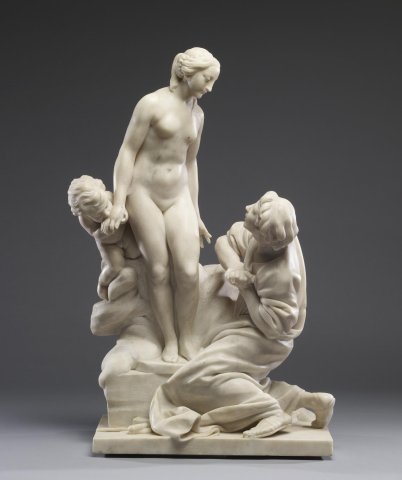Pygmalion at the feet of his statue, at the moment when it comes to life (Baltimore version) - Falconet
Notice précédente Notice n°68 sur 77 Notice suivante
Description
1763 Salon Booklet:
By Mr Falconet, Professor.
164. A marble figure representing gentle Melancholy.
165. A marble group representing Pygmalion at the feet of his statue, at the moment when it comes to life."
Mathon de La Cour, Letter IV, p. 78:
Mr. FALCONET, who gave the Academy, for his admission, that beautiful Milon that you know, is no less successful, Madam, in expressing tenderness and happiness. He has exhibited a marble group representing Pygmalion at the feet of his statue, at the moment when it comes to life. Imagine, Madam, a statue perfectly beautiful in its form and proportions[.] Cupid brings his mouth to one of her hands and strives to give her life with his fiery breath; the statue seems to come to life: she raises her arms slightly and turns them [79] tenderly towards her creator. Pygmalion, transported, is in the posture of a man kneeling who is rising: astonishment and love appear in his face and in all his movements: I believe it would have been impossible to render this feature of the fable in a more tender, ingenious and delicate manner. Even those who have never loved understand, when they see this piece, what it can be like for a lover when an unfeeling woman softens; that moment, which one never forgets, when her heart opens to feeling and her embarrassed eyes begin to express it.
2. The statue from 1763 was purchased by Thiroux d'Epersenne.
This statue was acquired by Henry Walters in 1924.
3. The Louvre Museum also has a Pygmalion and Galatea by Falconet, which it claims is the one exhibited at the Salon of 1763.
Technical Data
Notice #000744




